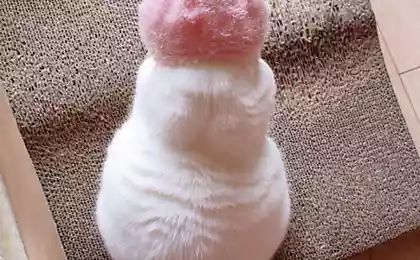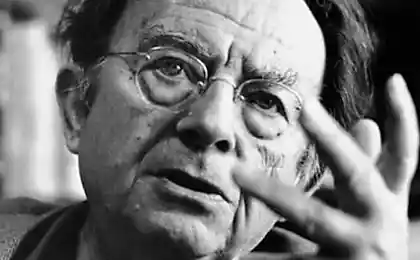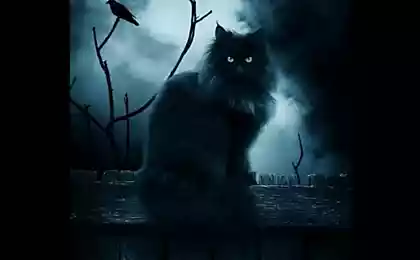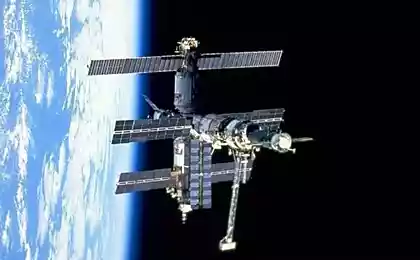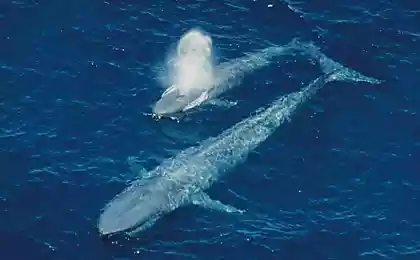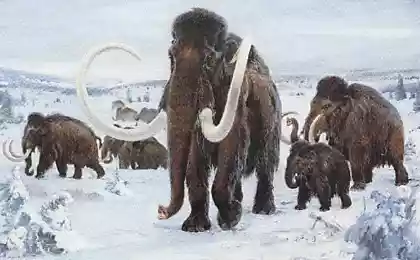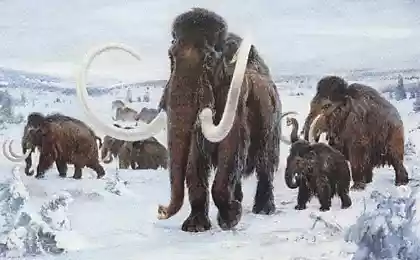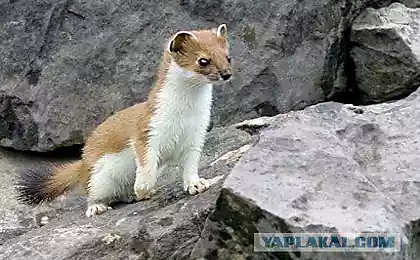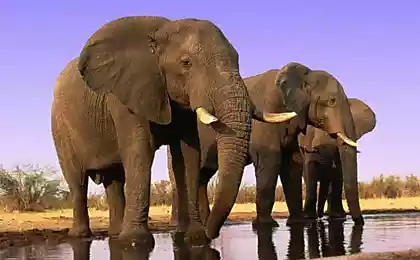729
The most primitive animal in the world
We have two pretendentaVopros about some of the living organisms can be regarded as the most primitive, it is not so simple. On this honorary title claiming their rights, at least two candidates.
Classic science suggests that the animals probably evolved from the so-called hoanoflagellyat (for collar flagellates). And the very first animals had to be something resembling a ball (or cake). "Ball" was composed of two types of cells: an outer layer that carried flagella for movement and served, and internal - similar to amoebas and performs the function of the digestive system. Approximately so arranged larvae of the lower animals - sponges and cnidarians. For this reason, it is considered that these creatures - especially the lips - is the most primitive animals of today, because they have changed little since ancient times!
However, the title of the most primitive animal, and claims a strange body called trihoplaks. It is a flat, slowly creeping blot, which has no axes of symmetry, no muscle, no front or rear end - and, of course, no digestive, nervous, circulatory and excretory systems. Trihoplaks resembles the larvae of coelenterates, it has long been considered the jellyfish larvae. Later, however, it became clear that this creature is an individual animal that form the sex cells and reproduce sexually. However, to find out in what way is the development of the fertilized egg, still failed. In aquariums "blots" reproduce asexually by simply dividing in two or budding its smaller parts.

In 2006, scientists from the US and Germany have read the small but highly informative part of the genome trihoplaksa - mitochondrial chromosome. It was found that the mitochondrial genome of the animal on the structure occupies an intermediate position between choanoflagellates (closest relatives animals) and all the other animals (including sponges and coelenterates).
On the one hand, it confirmed what many scientists that trihoplaks is the most primitive animals of all existing. "He's certainly not a descendant simplify sponges or coelenterates, whose mitochondrial genomes have retained much less primitive features - writes in his book," The Birth of complexity. Evolutionary biology today: unexpected discoveries and new questions "renowned biologist and popularizer of science Alexander Markov. - Easy organization trihoplaksa primary. She explained that of all the many and diverse descendants of the "common ancestor of all animals" trihoplaks changed least of all ».
Nevertheless, to draw final conclusions yet. A little later, it was to read and nuclear (core) gene trihoplaksa. And the results of this study led to doubt the findings on the basis of the mitochondrial genome of this strange creation, since its nuclear genome was less primitive features than sponges. Thus, the sponge again claim to be the primitive animals of today, despite the fact that the most primitive preserved mitochondria still have trihoplaksa.
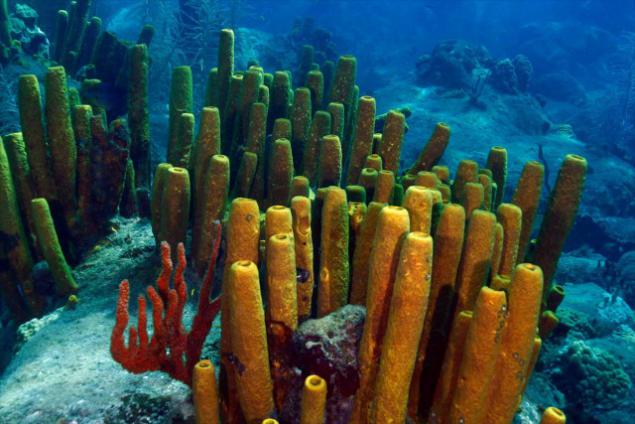
At present there is no sponge tissue, no germ layers (layers of the embryo body of multicellular animals, giving rise to various organs and tissues), there is the nervous, muscular, digestive systems and, of course, his own skeleton. The latter is represented by different protein and mineral structures. Reproduction - both sexually and asexually. The body shape of the sponges is goblet, cup-shaped and tree-like. Today approximately eight thousand described. Kinds of these animals. Fossil is known to form the Precambrian (650-800 million years ago).
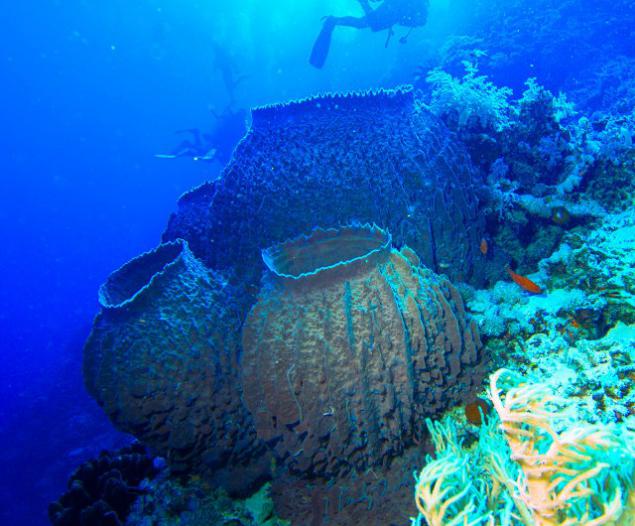
That contrasted with the rest of the sponge animals - as they call the latter "real multicellular animals» (Eumetazoa).
via naked-science.ru/article/nakedscience/samoe-primitivnoe-zhivotnoe-na
Classic science suggests that the animals probably evolved from the so-called hoanoflagellyat (for collar flagellates). And the very first animals had to be something resembling a ball (or cake). "Ball" was composed of two types of cells: an outer layer that carried flagella for movement and served, and internal - similar to amoebas and performs the function of the digestive system. Approximately so arranged larvae of the lower animals - sponges and cnidarians. For this reason, it is considered that these creatures - especially the lips - is the most primitive animals of today, because they have changed little since ancient times!
However, the title of the most primitive animal, and claims a strange body called trihoplaks. It is a flat, slowly creeping blot, which has no axes of symmetry, no muscle, no front or rear end - and, of course, no digestive, nervous, circulatory and excretory systems. Trihoplaks resembles the larvae of coelenterates, it has long been considered the jellyfish larvae. Later, however, it became clear that this creature is an individual animal that form the sex cells and reproduce sexually. However, to find out in what way is the development of the fertilized egg, still failed. In aquariums "blots" reproduce asexually by simply dividing in two or budding its smaller parts.

In 2006, scientists from the US and Germany have read the small but highly informative part of the genome trihoplaksa - mitochondrial chromosome. It was found that the mitochondrial genome of the animal on the structure occupies an intermediate position between choanoflagellates (closest relatives animals) and all the other animals (including sponges and coelenterates).
On the one hand, it confirmed what many scientists that trihoplaks is the most primitive animals of all existing. "He's certainly not a descendant simplify sponges or coelenterates, whose mitochondrial genomes have retained much less primitive features - writes in his book," The Birth of complexity. Evolutionary biology today: unexpected discoveries and new questions "renowned biologist and popularizer of science Alexander Markov. - Easy organization trihoplaksa primary. She explained that of all the many and diverse descendants of the "common ancestor of all animals" trihoplaks changed least of all ».
Nevertheless, to draw final conclusions yet. A little later, it was to read and nuclear (core) gene trihoplaksa. And the results of this study led to doubt the findings on the basis of the mitochondrial genome of this strange creation, since its nuclear genome was less primitive features than sponges. Thus, the sponge again claim to be the primitive animals of today, despite the fact that the most primitive preserved mitochondria still have trihoplaksa.

At present there is no sponge tissue, no germ layers (layers of the embryo body of multicellular animals, giving rise to various organs and tissues), there is the nervous, muscular, digestive systems and, of course, his own skeleton. The latter is represented by different protein and mineral structures. Reproduction - both sexually and asexually. The body shape of the sponges is goblet, cup-shaped and tree-like. Today approximately eight thousand described. Kinds of these animals. Fossil is known to form the Precambrian (650-800 million years ago).

That contrasted with the rest of the sponge animals - as they call the latter "real multicellular animals» (Eumetazoa).
via naked-science.ru/article/nakedscience/samoe-primitivnoe-zhivotnoe-na
